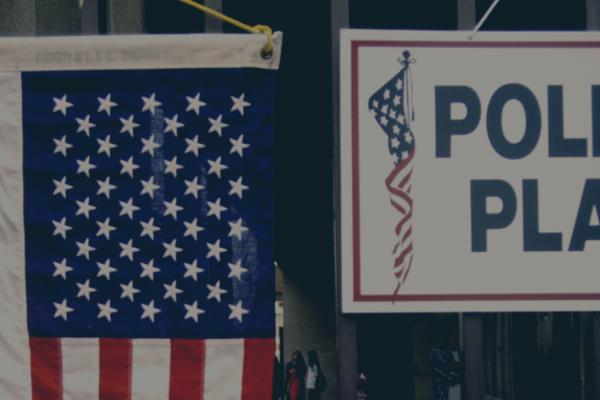This week — as the five candidates still in the running for the White House turned their campaigns westward, vying for top spots in Arizona, Idaho, and Utah — pundits wondered aloud if voter suppression would make an impact on the general election. At the same time, miles-long lines formed in Arizona’s Maricopa County, the most populous and racially diverse county in the state. According to reports, lines of voters were still winding around blocks and parking lots even as news stations were projecting winners. Why? Because Maricopa County had reduced its polling places by 70 percent between 2012 and 2016, from 200 polling places to 60. How could they do that?
It's true: Maricopa County reduced the number of polling places on purpose. Here's why https://t.co/vNJTumUW80 pic.twitter.com/SKPAhlUdz4
— azcentral (@azcentral) March 23, 2016
In June 2013 the Supreme Court defanged the 1965 Voting Rights Act, which had halted a century’s worth of race-based voter suppression. The Court declared the formula that Congress used to determine which states were required to seek pre-clearance from the Department of Justice before changing voting laws was out of date and needed to be updated. It didn’t matter that Congress had approved the formula in 2006, only a few years before by a vote of 98-0 in the Senate and 390-33 in the House.
By the end of 2013, 92 restrictive bills were introduced in 33 states, according to a 2013 Brennan Center for Justice report. This year, Arizona — a state previously on the list of pre-clearance states due to its history of racial voter suppression — passed legislation to close 70 percent of polls in its most diverse county.
Voter suppression laws are only part of the picture. Racially gerrymandered districts — districts with racially drawn boundaries — help secure and protect the rule of a particular political party or race within a region.
The New York Times reported earlier this month that North Carolina, a state familiar with Jim Crow literacy tests and voter intimidation, is feeling the impacts of gerrymandered districts. Under maps drawn in 2011, this swing state is now ruled by Republicans in 10 of 13 congressional seats. There are several pending lawsuits over the state GOP’s redistricting laws.
This is all about power — white people’s demographic loss of it, and attempts to rig the system to maintain it. It’s not really a new thing.
In 1787 the Three-Fifths Compromise could be considered an early form of racialized gerrymandering that rigged the playing field between the North, where whites were plentiful, and the South, where blacks dominated the landscape. To keep the South engaged in the fragile new union, northern legislators allowed their southern counterparts to count enslaved black people as 3/5ths of a human being. Northerners didn’t want to count enslaved people as human at all. With a flat counting structure, the white southern minority would always be greatly disadvantaged to the north when voting in Congress. But they compromised, allowing southern districts to expand their boundaries to include black people as residents, so that the region was eligible for more representation in the House. Blacks increased representation but were barred from the vote.
Likewise, the Naturalization Act of 1790 named and secured the voting class in the new United States. It declared in no uncertain terms that the only people who could become naturalized citizens of the U.S. were free white men. What’s the significance? Citizens could vote.
So, there you have it. In the nation’s first declaration of who would have the right to vote, it was codified by race.
Jim Crow was simply another way to secure and maintain white supremacy in the U.S. That’s why thousands were killed. That’s why poll taxes and literacy tests were developed: to secure and maintain white power after passage of the 15th Amendment, which extended the right to vote to all races.
I find it interesting that at precisely the same time that we see a deep demographic shift, we also see the majority of states passing voter suppression laws and gerrymandering districts — and a rise in violence against people of color. Streams of black men, women, and children killed by police officers and vigilantes and draconian immigration laws separating immigrant families are accompanied by a steep rise in desperate power schemes.
Genesis 1:26-27 says all human begins are created in God’s image. In the same breath, the scripture says “and let them have dominion.” The implication is clear: 1) If you are human, you have the divine call and the capacity (all things equal) to exercise dominion (agency, stewardship of the world). 2) When we govern in a way that limits or hinders the capacity of human begins to exercise dominion, we are limiting the image of God on earth.
In a democracy, the right to vote is the most fundamental way human beings have to exercise dominion. Thus, the protection of the right to vote, is the protection of the image of God within our borders.
The image of God was oppressed in Arizona’s 3-hour voting lines. It’s oppressed throughout the United States, and North Carolina’s lawsuits are evidence.
The thing that grieves me more than anything is who we see passing these laws, building these rigged structures. By and large, it is people who profess faith in God.
How is it possible to exercise faith in God, while crushing God’s image with your laws? It is not possible.
The question is: What do we do about it?
First we repent of our own lack of urgency to rescue the image of God on our watch. Then, we must call our legislators to repent of the ways they have bowed the knee to fear, rather than faith. Then, we must organize, organize, organize. We must pull out the stops to help as many images of God to exercise dominion in November as possible.
This is not an option. This is what it looks like to honor God in a democracy.
Got something to say about what you're reading? We value your feedback!

